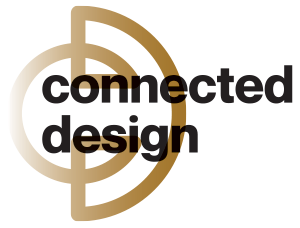By Jimmy Paschke, director of residential sales at SurgeX
The vision of the connected home as evolved dramatically since the Smart House movie debut in 1999 (if you haven’t seen it, you probably should). Once envisioned as a home retrofitted with mismatching panels and fluorescent blue computer screens tacked across the walls, the modern smart home goes beyond what we could have ever envisioned two decades ago. Beautifully designed keypads, luxurious lighting and shading options, rich surround sound and automation galore, integrators truly deliver on the design and functionality in today’s connected home installations.
Amidst the competition to complete projects with a seamless look, manufacturers and technology integrators alike are delivering on the most innovative home technologies with smooth, chic style. Soft edges, popping colors and interoperability is in. Bulky and noisy however is out. One challenge that stands at the intersection of home design and technology deployment is power management – clunky, loud and wire-messy, some power solutions can stick out like a sore thumb and cause a break in the visually appealing installations homeowners yearn.
Power management and conditioning are priorities across a variety of electronic environments, and more technology professionals are finding new solutions that save space, allow for remote monitoring and more. Power anomalies can throw a wrench in the tech that homeowners expect to work seamlessly; spikes, sags, surges and more can cause permanent damage, gradual degradation and recurring disturbances of electronic equipment. To shield users from the most pressing power challenges, from inconvenient blackouts to lockups to full blown destruction, the right power conditioning and backup equipment is critical for mission-critical residential technology, and for protecting the installer’s reputation.
But looks are just as important. That’s why the future of power management lies in new solutions that combine leading technology and features within a sleek, compact chassis. Delivering on the promise of the best of both worlds – functionality and design-friendliness – the latest in power management devices offer a combination of the most in-demand technologies for monitoring, protection, battery backup in a single unobtrusive device.
Depending on the needs of the power environment, of course, proper power management solutions will vary. Typically, a strong solution for the home measures and provides reports on electrical parameters, including voltage, current, power, frequency, power factor, and crest factor, while also providing advanced surge protection and power conditioning in an appropriately sized form factor. Many products exist that include these features are on the market, but with the current design demands of homeowners, integrators will want to be sure that the device not only offers this superior protection, but also pleases the eye of design-conscious clients.
Beyond the aesthetic of devices, integrators should be focused on two baseline elements in a power foundation to protect their installations from spikes, sags, and other power anomalies that can damage devices or cause system downtime: voltage regulation with power conditioning and surge elimination. While voltage regulation with power conditioning ensures the system’s reliability by removing distortions and feeding clean and stable power into connected devices, surge elimination technology protects the homeowner’s investment in the technology by removing surges from the power environment in a non-sacrificial way, so the anomalies won’t degrade the device. This ensures the technology maintains the longevity of the power foundation just as well as the connected technology.
Smart homes have come a long way, but they can’t just be smart anymore. The convergence of design and technology adds pressure to spec the right products for the job, often in collaboration with designers. No longer does power management need to be an eyesore: Everything a home technology integrator needs can be found in one place. When tucked away, homeowners and integrators alike can adopt newfound confidence that their systems will remain online and running.
This article appears on connecteddesign.com.

